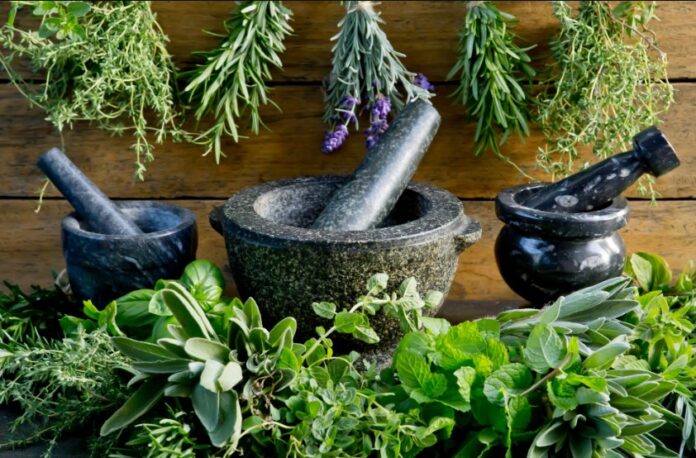Do you enjoy the fragrance of fresh thyme? Have you ever used a variety of delicious, seasonal herbs for cooking?
Most of us know about using a pinch of salt and pepper in our cooking, but there’s a whole variety of herbs perfect for all sorts of tastes that are perfect for cooking and many other uses. Do you know about different types of herbs and where you can get them?
What about their health benefits?
If you’ve ever wondered about the world of herbs, you’ve come to the right place. Keep reading to learn everything you need to know about some herbs and their uses.
Culantro
Culantro is an herb that is closely related to cilantro. It is often used fresh or dried in Latin American and Caribbean cuisines. It has a strong flavor and is often used in small amounts.
Culantro has many health benefits. It is a good source of vitamins A and C, iron, and magnesium. It also contains antioxidants and anti-inflammatory compounds. These properties make culantro a good choice for those looking to improve their health.
Epazote
Epazote is an herb that is native to Mexico and Central America. It has a strong, pungent flavor and is usually used to flavor beans and other dishes.
It is also used as a folk remedy for various health conditions. It is effective for digestive problems, nausea, and gas. It is sometimes used as a topical treatment for skin conditions.
Hoja Santa
Another type of herb that can be particularly beneficial is hoja santa. Hoja santa is a type of evergreen that is native to Mexico and Central America. It has large glossy leaves that are usually used in Mexican cuisine.
The leaves of the hoja santa plant are also known to have medicinal properties. For example, they can treat digestive issues such as stomach pain and indigestion. Additionally, hoja santa leaves can also help to boost your immune system.
Pepper Leaf
Pepper leaves are a high source of antioxidants, which can help to protect your cells from damage. Pepper leaf is also a good source of vitamins A, C, and K. It can also help to reduce inflammation.
All these properties make pepper leaf a great herb to add to your diet if you are looking to improve your health.
Yerba Buena
Yerba buena is a mint native to the South American countries of Argentina, Bolivia, Chile, Colombia, Ecuador, Peru, and Uruguay. This herb has a wide range of health benefits, ranging from improving digestion to alleviating anxiety. Yerba buena is also a good source of antioxidants, which can help protect the body from damage caused by free radicals.
Huperzia Serrata
The next herb that is often overlooked is Huperzia Serrata. This herb is native to China and has been used in Chinese traditional medicine for hundreds of years.
Huperzia Serrata is known for its cognitive-enhancing and neuroprotective properties. This is why it is commonly used in making Huperzine A, an herbal medicine. The Benefits of Huperzine A include cognitive function, improved memory, and protection of the brain from age-related damage.
Oregano
Oregano is an herb that’s used in many different cuisines. It is a member of the mint family and has a strong flavor.
The leaves of the plant are used fresh or dried and are more often used in cooking. Oregano is a good source of fiber, iron, magnesium, and calcium. It can also help to improve digestion.
Thyme
Thyme is an herb that is native to the Mediterranean. It is a member of the mint family and has a powerful flavor.
Thyme can be a flavor for food or made into tea. It is also used in aromatherapy. Thyme essential oil is very potent and can treat various health conditions like digestive problems, and respiratory problems, and even act as an insecticide.
Chamomile
Chamomile is a member of the daisy family and has been used for centuries to improve health. It can be found in many forms, including tea, capsules, and even oil.
Chamomile oil is one of the most relaxing and calming oils available. It is a gentle relaxant and can help relieve insomnia.
Chamomile tea is high in calcium and can help prevent osteoporosis. Capsules and tinctures of chamomile can help treat stomachaches, gas, and even diarrhea.
Ginger
Ginger is also one of the most widely used herbal options for nausea, vomiting, and indigestion. It is also effective against headaches and motion sickness. There are many different ways to take ginger, including fresh, powdered, capsule, or tea form.
When taking ginger for nausea, it is best to take it 30 minutes before meals. For other uses, ginger can be taken up to three times daily. If you are pregnant or breastfeeding, it is best to speak to your healthcare provider before taking ginger.
Rosemary
This fragrant herb is not only tasty, but it has a long history of use in natural medicine. Rosemary can improve digestive issues, relieve pain, and boost circulation.
Also, rosemary improves memory and concentration. It is also a good source of antioxidants.
The Types of Herbs and Their Uses
If you’re looking to add more flavor to your dishes or want to explore the world of herbal medicine, this ultimate guide is a great place to start. With different types of herbs, you’re sure to find the perfect one for you.
While herbs are generally safe to consume, it is important to check with your healthcare provider if you have any allergies or are taking any medications that might interact with them.
So what are you waiting for? Start exploring today!
If you find this helpful and want to read more great content, check out our latest blog posts now!










